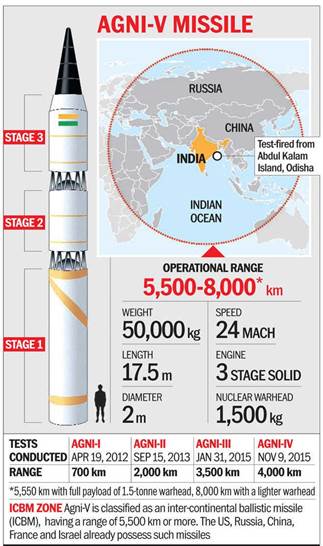Microplastics
Why in News: Scientists have recently developed a biodegradable plant-derived polymer capable of decomposing at the microplastic scale.
Table of Contents
ToggleAbout Microplastics:
- Microplastics are minuscule plastic particles originating from various sources, including commercial production and the degradation of larger plastic items.
- They are officially defined as plastics with a diameter of less than five millimeters (0.2 inches), distinguishing them from larger plastics known as “macroplastics.”
- Microplastics are ubiquitous in various products such as cosmetics, synthetic clothing, plastic bags, and bottles, which often end up as environmental waste.
- These particles consist of polymer chains formed by carbon and hydrogen atoms, often accompanied by other chemicals like phthalates, PBDEs, and TBBPA.
Primary and Secondary Microplastics:
- Primary microplastics are intentionally produced tiny particles found in products like cosmetics and clothing fibers. They also include materials like fishing nets.
- Secondary microplastics form from the breakdown of larger plastic items due to environmental factors such as sunlight and ocean waves. Water bottles are a common source of secondary microplastics.
Environmental Impact:
- Microplastics pose a significant environmental threat as they persist in the environment without readily breaking down into harmless substances.
- In oceans, microplastics can accumulate and combine with other harmful chemicals before being ingested by marine organisms.
- Standard water treatment processes are often insufficient in removing all microplastic traces, leading to widespread contamination.
- Microplastics also contribute to air pollution, found in dust and airborne fibrous particles, further exacerbating environmental concerns
Agni Prime Missile
Why in News: The Strategic Forces Command (SFC), in collaboration with the Defence Research and Development Organisation (DRDO), effectively conducted a flight test of the latest ballistic missile named Agni-Prime. This test took place at the Dr APJ Abdul Kalam Island situated off the coast of Odisha.
About Agni-Prime Missile:
- Enhanced Agni Series: Agni-Prime is an advanced version within the Agni missile family, possessing nuclear capabilities.
- Two-Stage Canisterized Design: Structured in a two-stage canister configuration, it exhibits a range spanning from 1,000 to 2,000 km.
- Reduced Weight and Enhanced Systems: Lighter than its predecessors, with a weight reduction of at least 50%, it integrates novel guidance and propulsion technologies.
- Versatile Transportation and Storage: It is adaptable for transport via road and rail, offering prolonged storage capabilities, thereby minimizing preparation time prior to launch.
- Cold Launch and Salvo Mode: Utilizes a cold launch mechanism and supports salvo firing, enhancing operational flexibility.
Ballistic Missiles
- Atmospheric Entry: Ballistic missiles are launched directly into the upper layers of the earth’s atmosphere.
- Beyond-Atmosphere Travel: Capable of traversing outside the atmosphere, where the warhead separates from the missile, targeting a predetermined destination.
- Rocket-Propelled and Self-Guided: These missiles are propelled by rockets and possess autonomous guidance systems.
- Varied Launch Platforms: They can be launched from aircraft, ships, submarines, and land-based platforms.
- Payload Flexibility: Suitable for carrying either conventional or nuclear payloads.
South East Africa Montane Archipelago (SEAMA)
Why in News: A recent investigation conducted in southern Africa has revealed a substantial amount of previously unrecorded biodiversity within a newly acknowledged ecological region known as the South East Africa Montane Archipelago (SEAMA).
About South East Africa Montane Archipelago (SEAMA)
- Newly Identified Ecoregion: SEAMA is a recently acknowledged mountainous ecological region.
- Geographical Extent: It spans from northern Mozambique to Mount Mulanje in Malawi, which is the second-highest mountain in southern Africa.
- Unique Features: The ecoregion comprises 30 granitic inselbergs rising over 1000 meters above sea level. Notably, it includes both the largest (Mt Mabu) and smallest (Mt Lico) mid-elevation rainforests in southern Africa, alongside biologically distinctive montane grasslands.
- Climate Distinctions: SEAMA experiences notably higher annual rainfall and humidity, particularly during the dry season, compared to neighboring regions.
- Endemic Biodiversity: The region harbors 127 plant species, 45 vertebrates (such as amphibians, reptiles, birds, and mammals), and 45 invertebrate species (including butterflies and freshwater crabs). Additionally, it hosts two endemic genera of plants and reptiles.
- Origin of Endemism: The unique biodiversity in SEAMA has emerged from divergence events aligned with the repeated isolation of its mountains from the pan-African forests. This is influenced by the considerable age of the mountains and their relative climatic stability.
- Environmental Threats: Since 2000, SEAMA has experienced a loss of 18% of its primary humid forest cover, with rates reaching up to 43% in certain locations. This represents one of the highest deforestation rates in Africa.
- Causes of Deforestation: The primary drivers of montane forest loss in SEAMA are slash-and-burn shifting agricultural practices, commonly utilized for subsistence food production by local communities, alongside charcoal production for household cooking and as a revenue source.






